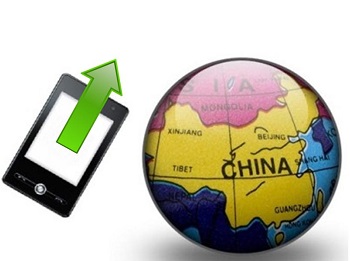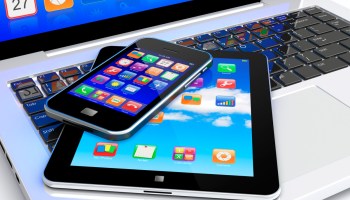Samsung Pay will be launching in China soon
Samsung is planning to launch its first mobile payments service, called Samsung Pay, in China this week. The company is set to compete with Apple, which has only very recently brought its own payment service to the country. Unlike Apple, however, Samsung may have a relatively easy time engage consumers with its new service. Jefferies, a global investment bank, believes that Samsung will find success in the Chinese market, which has become heavily involved in mobile commerce in recent years.
Analysts see Samsung Pay finding more success among consumers than Apple Pay
Jefferies equity analyst Johnny Wong Kin-man believes that there will be less fanfare surrounding the launch of Samsung Pay, but it will likely be more accepted among merchants than Apple Pay. Apple has had trouble ensuring the launch of its payment service in China, where banks had shown relatively little interest in the service. Banks had shown concern that Apple was attempting to take advantage of the mobile commerce ecosystem that they have already established. Apple has since acquired the support of several banks, many of whom see a great deal of promise in the mobile payments space.
Samsung Pay could become a universally accepted payment platform
 Samsung Pay has already proven to be extremely popular among merchants. Samsung predicts that as many as 30 million merchant locations throughout the world will accept the new payment service in the near future. This would make Samsung Pay the world’s first mobile commerce solution that has near universal acceptance. In China, Samsung Pay may become quite popular among consumers that have become reliant on their mobile devices while shopping.
Samsung Pay has already proven to be extremely popular among merchants. Samsung predicts that as many as 30 million merchant locations throughout the world will accept the new payment service in the near future. This would make Samsung Pay the world’s first mobile commerce solution that has near universal acceptance. In China, Samsung Pay may become quite popular among consumers that have become reliant on their mobile devices while shopping.
Samsung will face significant competition from Alibaba and Tencent
While Samsung may be able to find more success than Apple, it will face major competition from other companies that have become involved in mobile payments. Both Alibaba and Tencent have established major footholds in the mobile space, with consumers using the platforms these companies have develop to purchase products online and send money to one another.
A recent study has revealed that many shoppers use multiple portable devices when they buy.
According to the results of a recent study from Criteo, when it comes to mobile commerce, the complete journey from product discovery to the actual purchase can involve several different devices, as opposed to just one, as has been the case with traditional online shopping over a computer.
The data from Criteo indicated that 40 percent of online purchases are now conducted over multiple devices.
This data was compiled as a part of the Q4 2015 State of Mobile Commerce Report from the firm. One of the main findings within that report was that consumers aren’t just using a single mobile device to complete online purchases. It’s true that 60 percent of m-commerce based purchases are currently occurring over smartphones, but Criteo’s data has also indicated that about 40 percent of all online transactions actually involve the use of several different connected and mobile devices that will eventually lead to a purchase. These gadgets include smartphones, but also PCs and tablets.
Mobile commerce is, therefore, dependent on making sure that the shopping experience works across these devices.
 According to the Criteo chief product officer, Jonathan Wolf, “Criteo’s quarterly Mobile Commerce Report demonstrates that mobile is an essential component of commerce today, with most consumers browsing and buying across multiple devices.” Wolf also added that “In order to better understand this digitally-savvy consumer, marketers need to stop looking at each device on its own, and start understanding the user behind them. Multi-device behavior is the new normal.”
According to the Criteo chief product officer, Jonathan Wolf, “Criteo’s quarterly Mobile Commerce Report demonstrates that mobile is an essential component of commerce today, with most consumers browsing and buying across multiple devices.” Wolf also added that “In order to better understand this digitally-savvy consumer, marketers need to stop looking at each device on its own, and start understanding the user behind them. Multi-device behavior is the new normal.”
Among the other key findings from the mobile commerce trends report were the following:
• Of all purchases made online, 4 out of every 10 involved the use of multiple devices before the final checkout procedure was initiated.
• One out of every 3 multi-device purchases reached a completion point over mobile (smartphone or tablet).
• There was a 15 percent year over year increae in mobile transactions from Q4 2014 to Q4 2015.
• Orders completed over tablets have a higher sales value than those completed over smartphones.
• Thirty seven percent of shoppers using desktop or laptop computers will also use mobile devices to browse retailer sites. They often look for products over mobile and buy them over PC.
• Among tablet shoppers, 43 percent use more than one device throughout the length of the shopping journey.
 Samsung Pay has already proven to be extremely popular among merchants. Samsung predicts that as many as 30 million merchant locations throughout the world will accept the new payment service in the near future. This would make Samsung Pay the world’s first mobile commerce solution that has near universal acceptance. In China, Samsung Pay may become quite popular among consumers that have become reliant on their mobile devices while shopping.
Samsung Pay has already proven to be extremely popular among merchants. Samsung predicts that as many as 30 million merchant locations throughout the world will accept the new payment service in the near future. This would make Samsung Pay the world’s first mobile commerce solution that has near universal acceptance. In China, Samsung Pay may become quite popular among consumers that have become reliant on their mobile devices while shopping.
 According to the Criteo chief product officer, Jonathan Wolf, “Criteo’s quarterly Mobile Commerce Report demonstrates that mobile is an essential component of commerce today, with most consumers browsing and buying across multiple devices.” Wolf also added that “In order to better understand this digitally-savvy consumer, marketers need to stop looking at each device on its own, and start understanding the user behind them. Multi-device behavior is the new normal.”
According to the Criteo chief product officer, Jonathan Wolf, “Criteo’s quarterly Mobile Commerce Report demonstrates that mobile is an essential component of commerce today, with most consumers browsing and buying across multiple devices.” Wolf also added that “In order to better understand this digitally-savvy consumer, marketers need to stop looking at each device on its own, and start understanding the user behind them. Multi-device behavior is the new normal.”